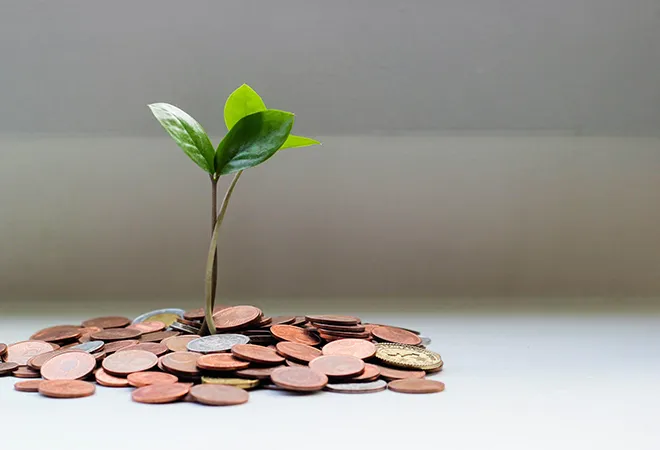
Need for immediate debt restructuring
Several developing and vulnerable countries, particularly small island developing states (SIDS), are facing severe challenges from multiple fronts, including unsustainable public debt, low foreign currency reserves, soaring inflation, a shortage of necessities, and a dwindling economy. On one side, they need to invest heavily in climate action to protect themselves from devastating climate-related extreme weather events such as hurricanes, storms, droughts, heat waves, floods, and sea-level rise. On the other side, many of them have ambitious plans to transition towards a green economy. Unfortunately, they do not have the fiscal muscles to mobilise the necessary capital for their climate actions. Amidst this situation, debt restructuring through climate change lenses will offer much-needed relief to these countries to make themselves climate-resilient and support global actions to mitigate climate risk.
The primary goal of the debt restructuring programme is to offer liquidity to achieve macroeconomic stability and quick recovery of the economy.
While it is imperative to rejuvenate the economy, without a thought of the environment, it could lead to environmental disaster and, consequently, possible macroeconomic instability. Unfortunately, most of the existing sovereign debt restructuring programme does not incorporate climate-change risk and biodiversity loss even if they are potential risks to macroeconomic and financial stability. A climate-resilient economy will support the country's macroeconomic stability efforts. The primary goal of the debt restructuring programme is to offer liquidity to achieve macroeconomic stability and quick recovery of the economy. However, there are specific ways a debt restructuring programme can offer long-term environmental benefits without hampering the debt restructuring programme's primary goals. The twin goals can be complementary instead of competing, even though the primary goal is focused on the short and medium-term gains, while the benefits of climate action will be realised in the long term.
Debt for nature swaps or debt for sustainability will offer dual benefits
A sovereign debt restructuring programme layout a debt relief programme from the creditors. Debt relief could be debt reductions, maturity extensions, grace periods, provision of concessional financing, debt swaps, and changes in interest rates. “Debt swap” is one of the debt restructuring programmes where new bonds will replace the existing bonds with revised clauses. Debt swap offers multiple benefits to a country reeling under a debt crisis: infusing much-needed liquidity; reducing a debt overhang and the country's external vulnerability; buying back existing debt at a discount, and preventing financial crisis. Reducing or extension of debt stock or debt services payment stabilises the economy and stimulates economic growth and investment. “DFC swaps” or “debt for sustainability” is one of the debt-for-swap tools to restructure sovereign debt. DFC swap involves an agreement between the sovereign state and creditors to reduce some of the borrowing country's debt in exchange for commitments, to invest in climate and natural outcomes.
Reducing or extension of debt stock or debt services payment stabilises the economy and stimulates economic growth and investment.
DFC swap offers traditional debt swap benefits. It will also help vulnerable countries build a climate-resilient economy by accessing international financial and technical assistance. Debt for nature swaps is not new;
this kind of transaction was earlier implemented in many countries, including Bolivia, Ecuador, Indonesia, and Seychelles. However, the transaction size was small.
Conservation International bought back Bolivian bank debt face value of US$650,000 at an 85 percent discount in exchange for legal protection of rainforest land and covering the operating costs for a reserve of 2.7 million acres. In the DFC structure, there are enough incentives for the governments of these countries to get the necessary financial support for quick economic recovery and much-needed restoration of the country's environment.
The mechanism, steps, and partners
There are various ways the transactions can be implemented. One of them is the sovereign state can swap existing foreign debt with local currency debt—the proceeds are used in climate-friendly projects. Another way is existing debt is replaced with new debt with better terms and conditions and provides additional debt for climate actions. This debt restructuring will give countries some breathing space on external debt payment and fiscal capacity to invest in climate actions. There will be a condition attached to this transaction - additional debts can be forgiven if proceeds of debt are used for climate-friendly projects and achieve the desired and pre-determined results. The climate-friendly projects can be climate-resilient low-emission agriculture, soil and water conservation and management, sustainable green cover and biodiversity, and the adoption of green energy. A structure can be created that incentivises the government to invest in climate-related projects. In both cases, key performance indicators (KPIs) are pre-determined.
The climate-friendly projects can be climate-resilient low-emission agriculture, soil and water conservation and management, sustainable green cover and biodiversity, and the adoption of green energy.
On one side of the structure, some creditors have given to these countries, and on the other side, there are multilateral agencies, bilateral institutions (other states), donors, Development Financial Institutions (DFIs), and Environmental, Social, and Corporate governance (ESG) investors who want to exchange debt for climate actions. While DFIs and multilateral agencies have a developmental agenda to enter into this transaction, bilateral institutions in this transaction are to improve the bilateral relationships with countries strategically important to them. The governments, particularly in the neighbouring countries, have strategic and economic incentives to support these countries as economic instability in the country could destabilise the peace in the region again. The ESG investors could be interested in this transaction if a structure is designed with the help of public financers (multilateral agencies, governments, etc.) so they can generate financial returns.
DFC swaps can promote climate action and potentially contribute to macroeconomic stability. They possess the potential to be an exceptional tool within the realm of international public finance, as they enable the achievement of long-term environmental advantages while simultaneously fulfilling developmental goals.
Labanya Prakash Jena is a Senior Manager and Head Centre for Sustainable Finance, Climate Policy Initiative (CPI).
The views expressed above belong to the author(s). ORF research and analyses now available on Telegram! Click here to access our curated content — blogs, longforms and interviews.




 PREV
PREV


